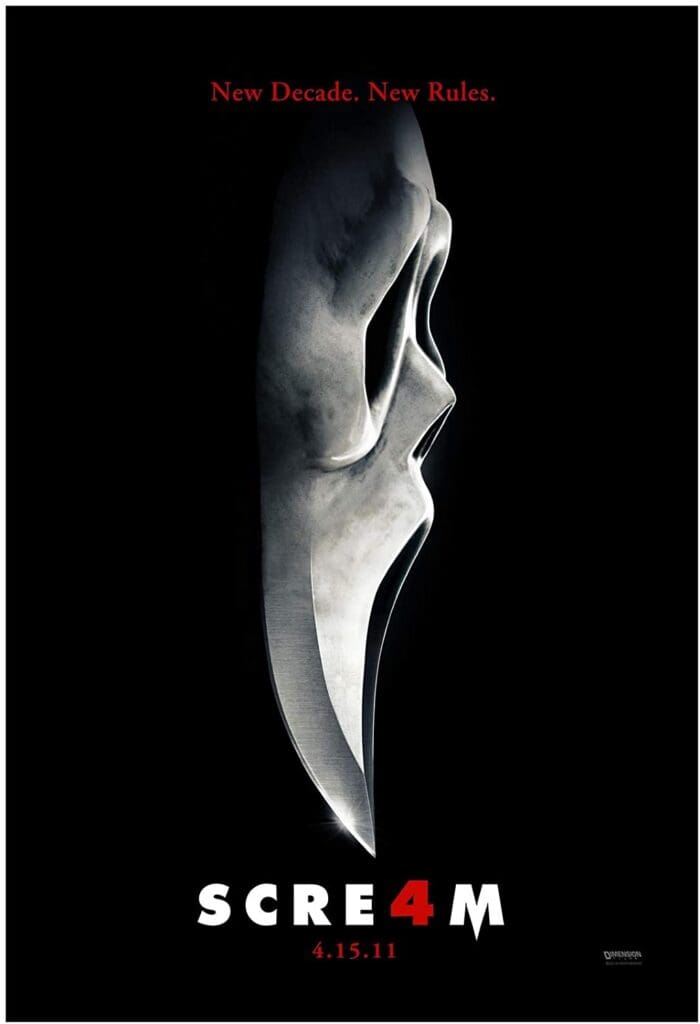
Shelby Hinte, Intern: “Don’t f*@% with the original,” declares Sydney Prescott (Neve Campbell) during the climax of 2011’s Scream 4. It’s a quote that has become almost as iconic for fans as the ominous ringing telephone and the unidentified caller who asks, in a low, distorted voice, “What’s your favorite scary movie?” Sidney Prescott and Ghostface, the fictional Woodsboro residents from Wes Craven’s Scream franchise responsible for these meme-worthy lines, have reached a certain level of iconography that has settled into the pop-culture vernacular for 25 years. While the Scream imagery may be fodder for internet fun and mockery, it is also a slasher franchise with a cult following that has remained faithful for decades. The films are often cited as being responsible for the postmodern slasher genre which is marked by self-awareness of its own subject matter and audience, parody, and meta-narratives that illuminate the construction of the films themselves. Like any series with a loyal fanbase, the inevitable question arises of whether you should mess with the original and if so, just how far can you take it?
As a devout fan, I often tout Scream 4 as comparable to the original, and for a significant era of my fandom have even argued that it is superior. The 2011 film opens with the sound of a telephone ringing. A black screen fades to reveal a home phone on the hook and then a hand reaches to pick it up. The shot pans out to show a teenage girl answering. The voice on the line is that same distorted one from 1996. The scene harkens back to the original and is a device used in the opening of every movie in the franchise except for the second installment. Moments after answering the phone, the teenage girl is slashed beyond recognition. It is all familiar—the voice, the ringing phone, the quick progression towards a violent and bloody murder—but what is different this time is that it’s a fake out. The shot pans out to reveal two different teenage girls watching Stab 6 (The fictional slasher series inspired by the original Woodsboro murders—yes, a movie within the movie).
“A bunch of articulate teenagers sit around and deconstruct horror movies until a ghost face kills them one by one. It’s been done to death. The whole self-aware, postmodern meta-shit is over. Stick a fork in 1996 already,” critiques one of the girls on the couch. Less than a minute later she is murdered by her friend, and again we pan out to another living room, where two different girls watch Stab 7. Another fake-out.
How meta can you get? This is a central question of all the films but finds its answer pushing the postmodern limits in Scream 4, which is hyper-self-aware and keenly observant of how the public’s relationship to celebrity culture has evolved. The fourth installment is ahead of its time in its depiction of teenagers constructing their own reality for perceived viewers. Their celeb obsessions are no longer devoted to an elite group of Hollywood stars, but to everyday people who have become famous online, including hometown hero and Woodsboro murder survivor, Sidney Prescott. In response to the evolution of stardom, this new generation of student cinephiles record their entire lives on camera to upload online and, following suit, their murderers do the same.
In 4’s false ending that closely resembles the actual ending of the original, the murderer reveals a desperation for fame as the motivation to kill. “I don’t need friends. I need fans…We all live in public now. We’re all on the internet. How do you think people become famous anymore?”
The film’s move away from obsession of celebrity-pop-culture to that of a super-self-saturated world where identity is a thing curated for the masses (one hopes) feels prophetic. Here, motivation is more terrifying than the murders themselves, because like the films before it, it isn’t so much about the killers as it is about the fame-starved culture that created them.
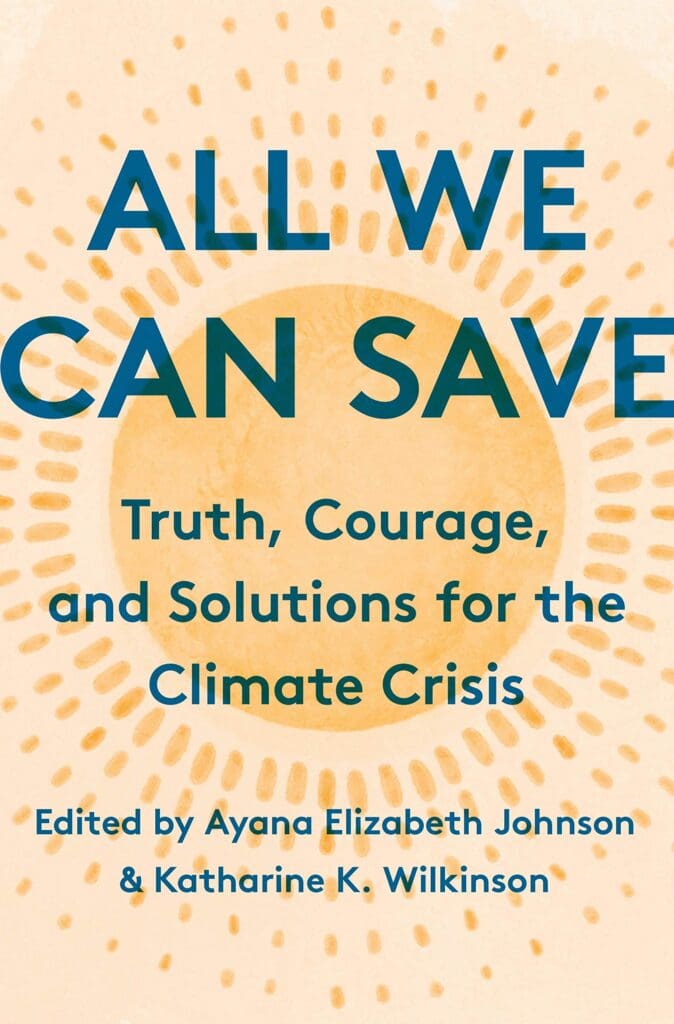
Peter Schlachte, Intern: Approximately once a day, I’ll check the news and fall into a thirty-minute doom spiral scrolling through story after story about the burning west, the hyperactive hurricane season, the rising seas eating into coastal cities, and America’s apparent lack of ability to act on any meaningful solution. Is it the most effective way to use my lunch break? No. Is it good for my mental health? Absolutely not. Yet, I can’t stop inhaling the bad news about climate change any more than I can stop inhaling the smoky air during fire season.
All We Can Save, a climate anthology conceived and edited by Dr. Ayana Elizabeth Johnson and Dr. Katharine K. Wilkinson is an antidote for my anxiety. The book (which comes with an interactive website and a host of other wonderful resources) is composed of over forty essays by women at the forefront of the environmental movement offering perspective, actionable solutions, encouragement, and optimism in the face of the immensity of the climate crisis. The essays are supplemented by poetry from excellent writers such as Ellen Bass, Camille Dungey, and Ada Limón.
This anthology is not only a response to the climate crisis; it’s a necessary rebuttal to the traits that link together patriarchal power structures and climate change—violence, greed, competition. To read Mary Anne Hitt describe the collaborative process of reducing America’s reliance on fossil fuels through the Beyond Coal Campaign, or Régine Clément discuss the importance of transitioning away from an extractive, capitalist economy is to enter a world that centers compassion and connectivity. It’s an anthology that threads the minuscule needle of assuaging my nearly endless fears about climate change while still spurring me to action—an impressive feat for an impressive book.
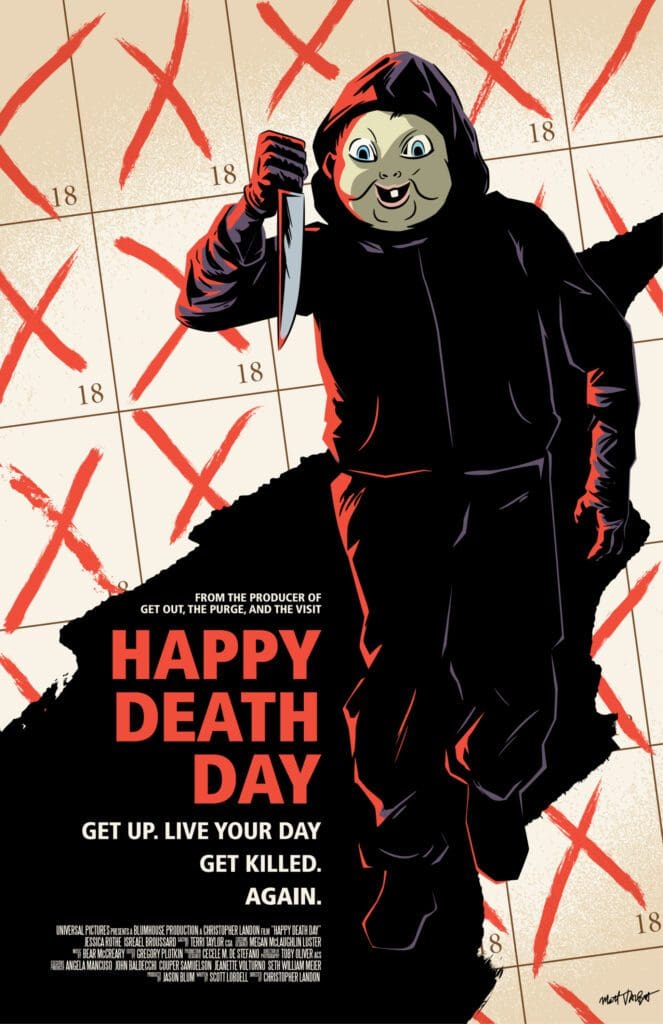
Supriya Saxena, Intern: A time loop, a sorority girl murder, a mean girl who must learn to be kind. Happy Death Day (2017) combines and reimagines these cliches to create a truly delightful horror-comedy film. Irreverent, absurd, and sweet, it’s a perfect October watch if, like me, you get too easily frightened by most horror films yet crave something on the spookier side for the Halloween season.
The film opens with Tree, a college student with a penchant for partying, as she wakes up on her birthday in another student’s dorm room. As she goes about her day, avoiding her dad’s calls and rejecting the birthday cupcake offered by her roommate, we see that she is selfish, needlessly cruel to others, and deeply unhappy. In the evening, she is stabbed to death by a masked killer—but instead of dying, she wakes up on the morning of the day she has just lived. The killer gets her again this time around, and again she awakes in the previous morning. Tree is stuck in this time loop of dying and reliving the same day until she can identify whoever is trying to kill her and stop them.
The film wears its nostalgia on its sleeve, shamelessly borrowing from 90’s films such as Groundhog Day (1993) and Scream (1996). There is little in this film that hasn’t been done before. But this is part of the fun of Happy Death Day: watching familiar yet disparate concepts combine into something original, our favorite horror and comedy elements stitched together to form a film that’s both old and new. This indulgence in cliches seems fitting given the time loop aspect of the film. We see Tree take the same morning walk through campus over and over again, but her perception and behavior are a little different each time, and we delight in the differences while enjoying the familiarity.
Perhaps the best aspect of the film is Jessica Rothe’s performance as Tree. Over the course of the film, Tree grows from being self-centered and apathetic to appreciative and caring, and Rothe’s performance captures this beautifully. Tree comes off as compelling and sympathetic even when she behaves in ways we don’t condone. Once Tree begins to realize how horribly she has been treating everyone and how dangerous her situation is, Rothe imbues her with a touching vulnerability. Rothe has the opportunity to show off her fantastic range, and the film is made better for it. The writing for Tree’s character is unfortunately shallow at times, but Rothe gives the character depth and allows her to soar.
Happy Death Day won’t terrify or repulse you, and it might make you roll your eyes a bit at its superficial portrayal of college life. Still, it’s a delightful and odd film that’s worth watching for the ways it blends horror with comedy and presents old ideas in a new way.
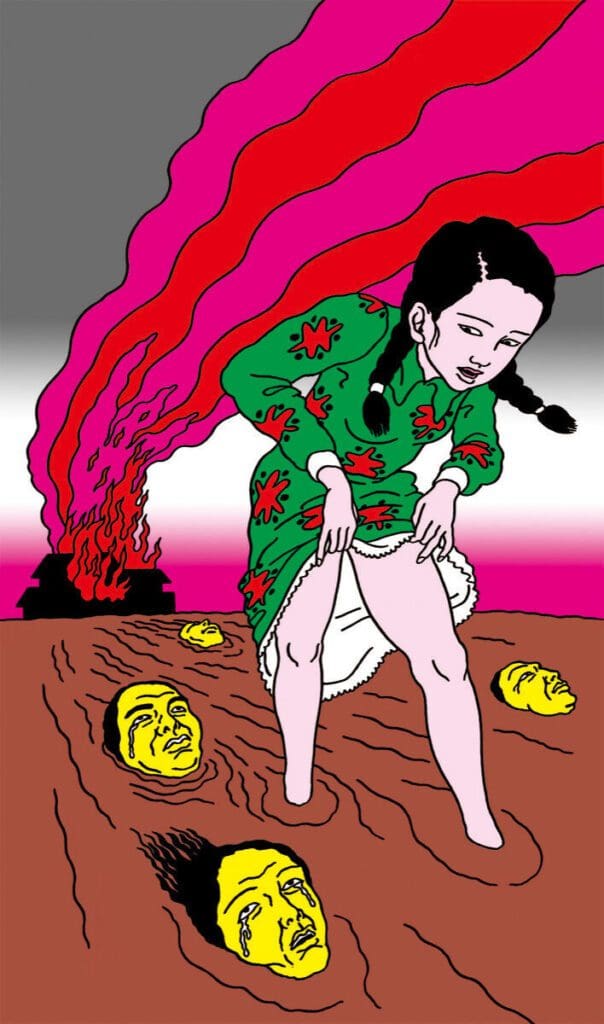
Chiara Bercu, Intern: If you’re looking for some Halloween-y illustration, or just looking to get disturbed more generally, I’d recommend erotic artist Toshio Saeki’s ink drawings, especially the saturated CMYK prints he made in the 70’s and 80’s. Saeki is considered part of the second wave of the ero guro movement in Tokyo and widely acknowledged as the “Godfather of Japanese Erotica.” His scenes are singularly deranged: sexualized cadavers, disembowelment, demons, murder, insects crawling in and out of bodies. As you might imagine, it’s unsettling to look at them—all the more so due to their friendly, elementary palettes, which communicate a very different affect at first glance.
In an interview with Dazed in 2013, Saeki said his illustration tries to “capture the vivid flowers that sometimes hide and sometimes grow within a shameless, immoral, and horrifying dream.” In spite of how morbid and actually death-borne Saeki’s work can be, there’s a distinct beauty in his prints, too—which makes his scenes, and their various evils, sort of indigestible. Saeki cited illustrator Tomi Ungerer’s erotic line drawings as an inspiration for his own renderings of beauty, telling a journalist in Elephant: “I felt something poisonous in his works and learned that beauty without poison is boring.”
In prints from the 70’s and 80’s, Saeki’s illustration seems intent on thwarting any possible ease of aesthetic pleasure for his viewers, and complicating (and making active) our experience of consumption. It’s no coincidence, I suppose, that so many of the pieces explore forms of unfettered hedonism, and the pleasure there is always violent. When Saeki passed away in November 2019, he left us with a few treasured collections of his work, including Toshio Saeki 70 (2006), Yumenozoki, The Art of Toshio Saeki (2014), Rêve écarlate (2016), and most recently Red Box (2019)—a re-issuing of his first ever collection of letterpress prints, Akai Hako, originally published in 1972. If you like your beauty with a little bit of poison, I’d highly recommend checking him out.
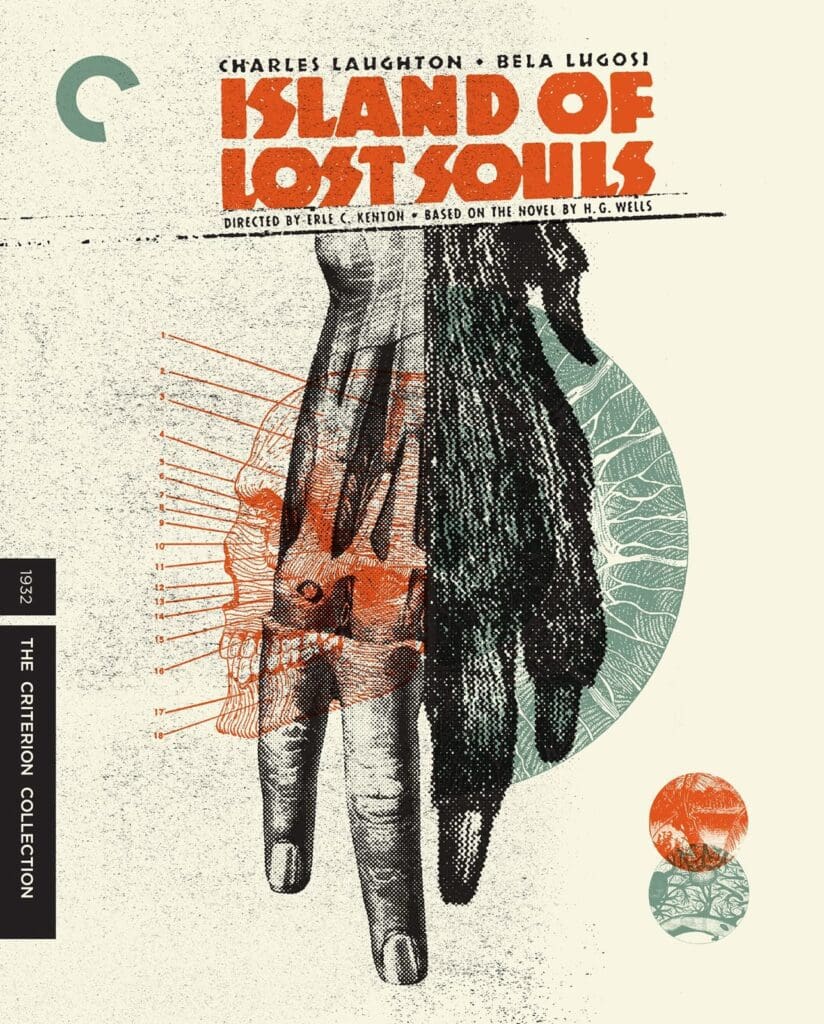
Zack Ravas, Editorial Assistant: It’s been a challenge to summon the Halloween spirit these last two years, but some of us persist in attempting to channel those autumnal vibes. And what’s more effective in this endeavor than a horror movie marathon? This season, I’ve cast my glance back at the era before Hollywood bowed to conservative pressures and enforced a ratings code—that brief span from about 1929-1934 when “talkies” were allowed to talk frankly about adult matters and explore storylines with darker implications. Naturally, the horror genre flourished during this time; for reference, this is when Universal Pictures kicked off their famous run of “Classic Monsters,” including Dracula and Frankenstein, both released in 1931.
However, for those inclined to dig deeper into the vaults—or simply armed with a subscription to the Criterion Channel—there is a trove of worthwhile chillers that are less ingrained in the popular consciousness, including the loose Edgar Allan Poe adaptation of Murders in the Rue Morgue (1932), featuring Bela Lugosi as a mad doctor unleashing his killer gorilla onto the streets of 19th century Paris; or the even looser Poe adaptation of 1934’s The Black Cat, which boasts a litany of ghoulish pleasures, including Boris Korloff as the leader of a Satanic cult, Bela Lugosi as the vengeful psychiatrist out to stop him, and, of course, plenty of black cats slinking about in the background.
Let’s go deeper: 1934’s The Mystery of the Wax Museum (streaming on HBO Max) offers an example of an early color process known as two-color Technicolor that makes the film look like a comic strip come to life; primary colors, particularly green and red, absolutely pop when depicting the costumed figures of the wax museum and the creepy workshop below, complete with bubbling cauldron of hot wax (mind your step!). But my strongest recommendation is reserved for 1932’s Island of Lost Souls—despite the slight title change, this is the earliest sound adaptation of H.G. Wells’ famous novel The Island of Dr. Moreau and one of those rare films that feels as though it’s screening from a projector in the human subconscious: a sweltering mix of jungle-bound terror and eroticism that taps into our fear (and suspicion) that man is not as far removed from its atavistic origins as society desires to think. Character actor Charles Laughton gives a terrific performance as Dr. Moreau, while Bela Lugosi’s familiar visage is buried under layers of monster makeup (and hair) in a supporting role. Yes, I think it’s beginning to feel a lot like Halloween.
